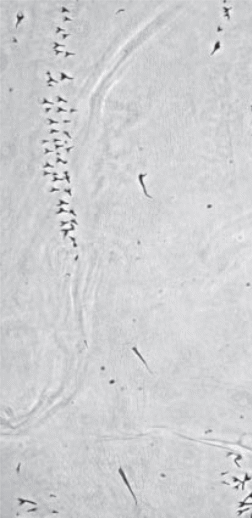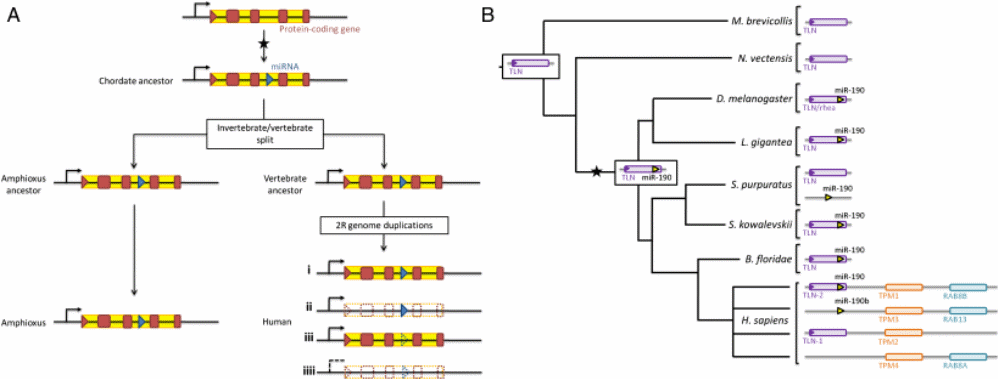Overview
The process through which living things grow and develop has remained fascinating throughout human history. Several scholars and researchers have invested their time and resources in unraveling mysteries surrounding this phenomenon. In general, developmental biology refers to the manner in which living organisms grow and develop. Currently, this branch of biology mainly studies differentiation and cell growth which result in tissues, anatomy, and organs. This term paper analyses two articles with double emphasis on how they advance developmental biology.
Article 1: introduction
Changes in developmental genes usually result in morphology with no causal effects identified. This article shows how functions of several enhancers have evolved via nucleotide replacement which interfered with the level of svb manifestation and timing. After the effects of nucleotide substitution had been quantified, it was discovered that almost every substitution had a phenotypic impact with most nucleotide changes playing a pivotal role. Additionally, these substitutions did not demonstrate non-additive effects. It is important to note that little is known concerning the genetic mechanism of morphological evolution. Studies with a comparative approach show that variation in heterochrony, heterotopy, and gene expression level cause significant morphological evolution. Nevertheless, no information about DNA changes has been unearthed to help in the understanding of these morphological changes (Frankel et al. 598). The following segments give factual information and discussion about molecular deviations in several transcriptional enhancers and how these have augmented developmental biology.
Discussion
Due to the differentiation of most epidermal cells in organisms, Drosophila melanogaster larvae are structured in a complex pattern. According to researchers, the dorsolateral epidermis differentiates into quaternary trichomes like D. melanogaster and in other species. Additionally, D. sechellia changes into smooth cuticles as compared to the above-mentioned trichomes (Frankel et al. 598). This is caused by the evolution of some of the regions of the svb gene as illustrated in figure 1c.
Similarly, svb enhancer evolves by changes in level and timing. This is augmented by the strengthening of patterns and the increase in the number of lateral cells that are crucial for the process to be successful. Due to the absence of svb messenger RNA, certain embryos like mel-E10 manifestation remain common in most lateral and dorsal cells. As a result, there is higher production of mRNA in later stages of embryo development. The implication of this fact is that D. sechellia E10 has an impact in the late stages of quaternary cells. Other forms of evolution include the E6 enhancer, together with several substitutions which result in morphological evolution (Frankel et al. 600).
As noted above, various changes in cis-regulatory parts result in morphological differences between cells that are closely related. As such, specific genetic changes in transcriptional enhancers have minimal impact on the expected phenotype (Frankel et al. 602). Notably, these substitutions show diverse epitasis with respect to E10 and E6. It is also important to note that identification of mutation order is not easily recorded. According to the results, the altered functioning of the E6 enhancer results from four substitutions in mutated groups, five in the E10 region, and an additional single site. Additionally, huge phenotypic differences are caused by multiple polymorphisms of minor impact in the ebony gene. Consequently, the order of genetic change is influenced by enhancer structure in genetic evolution. From the survey, it was further discovered that the determination of the natural selection process on particular non-coding genomic parts has remained a major challenge in advancing evolutionary genetics in the world today. Moreover, modification of enhancers is essential in the evolution of several patterns while the evolutionary ability to exist enhancers may be affected by excess deletion of cis-regulatory DNA (Frankel et al. 602).
Conclusion
From the above analysis, it is worth noting that morphological evolution encompasses a wide range of unknown mechanisms. Nevertheless, significant morphological evolutions have been caused by variations in timing, location, and the level of gene expression. This constitutes a major component in understanding the entire field of morphological evolution and developmental biology.
Article 2: Introduction
It is clear that ncRNAs- noncoding RNAs play a major role in several biological processes and the entire discipline of evolutionary genetics. Some of the processes controlled include but are not limited to developmental, metabolism, cell differentiation, and control of cell cycles. There are different groups of ncRNAs that have been well studied and are well known (Campo-Paysaa et al. 15). These include microRNAs and small nucleotides among others. It has been proved that a good section of miRNA selection of a given species is usually connected with other species. The uniqueness of the species which have been considered paramount as those with miRNAs are distinct and are not present in another class of different taxa. With prospective scientific development, it has arguably been mentioned that miRNAs are likely to be influential in the streamlining of evolution based on the fact they have the ability to improve genic accuracy (Campo-Paysaa et al. 16).
Discussion
This discussion focuses on the results obtained by considering the role of miRNAs in different species and in strategic parts of the deuterostome phylogeny. Additionally, experimental results were compared with known statistics and ideas known in protostome taxa and human beings (Campo-Paysaa et al. 20). Due to the expansion of the lineage of vertebrates, results covering gene duplication were quite consistent. Even though human data reveal more information about these relationships, the difference between cyclotomespecific miRNAs and human-specific was triggered by the expansion of miRNAs balance in other mammals.
Notably, it has been shown that Xenopus tropicalis, Drosophila melanogaster, and mammals have their miRNA genes placed in introns of major protein-coding genes. However, the number of miRNA genes found in introns of protein-coding is significantly higher within 40% in amphioxus and 63% in human beings. Despite this disparity, intronic minRNAs in chordates have a similar coding orientation as compared to their host genes (Campo-Paysaa et al. 20).
Importantly, gene duplication present differences in the fate of intronic miRNAs and their respective protein-coding host gene. In addressing this scenario, analysts argue that gene duplication usually presents only two cases which are retention or loss. As such, protein-coding host genes are commonly lost because of the presence of double and complete genome duplications. As a result, minRNA genes are left behind and considered as intergenic (Campo-Paysaa et al. 20). This is illustrated in figure 2.
Besides duplication, intronic exaptation has also been used in facilitation of the understanding of new miRNA genes in the world. In general, exaptations refer to traits which serve other functions together with the original function of its evolution (Campo-Paysaa et al. 21). A good example of this phenomenon is the development of a novel miRNA which was achieved from ancient introns.
Conclusion
From the analysis of this article, it is more evident that microRNAs play a significant role in countless cellular and microevolution processes. The two articles emphasize that miRNAs are important in canalization of evolution and morphological development. These two articles generally lay emphasis on developmental biology by describing processes of evolution and their impact on genes in living organism.
Figures


References
Campo-Paysaa et al. “MicroRNA complements in deuterostomes: origin and evolution of microRNAs.” Evolution and Development 13.1 (2011): 15 – 27. Print.
Frankel et al. “Morphological evolution caused by many subtle-effect substitutions in regulatory DNA.” Nature 474 (2011): 598 – 603. Print.